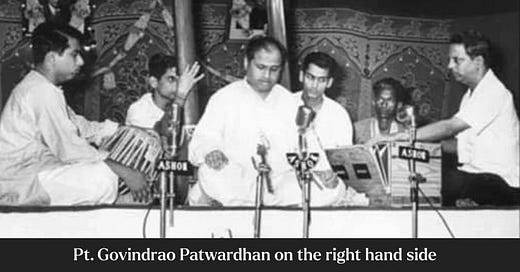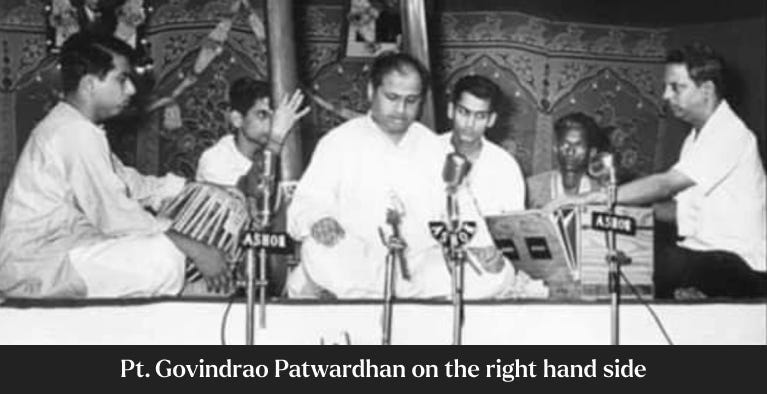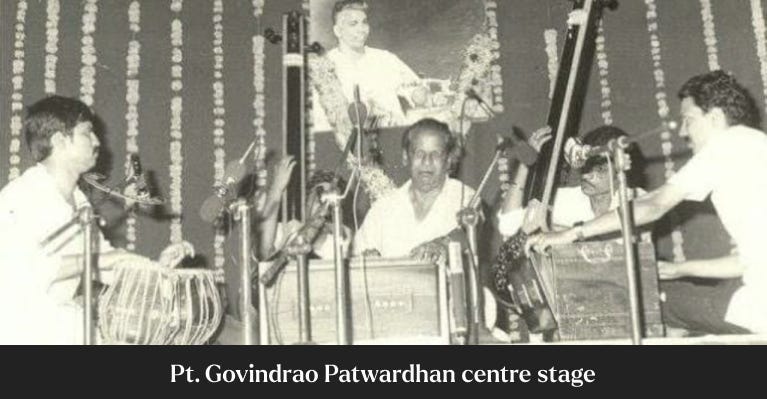This blog post is for all designers who dream of having a seat at the table. It's for those who aspire to be true design leaders, who embrace mentorship and coaching, and who share their knowledge through platforms like LinkedIn and design forums.
Let me start with Pandit Govindrao Patwardhan (21 September 1925 - 30 January 1996) - a well-known harmonium and organ player. P.L. Deshpande’s in his talk (Marathi) explains in detail the journey of the legend. How he started as an accompanist and then later how he deserved a center stage.
As a true accompanist, he never demanded the spotlight. His focus was on exquisite service, elevating the performances of others. Yet, his absence would be a glaring void. P.L. Says, as Ekalavya, he worshipped his instrument and no particular Guru or Gharana. He strived for excellence in his craft.
Over decades of dedication, his talent and artistry shone so brightly that he earned his rightful place on the center stage. He serves as a powerful reminder that excellence and commitment pave the path to recognition. Ustad Bismillah Khan was one such similar legend who brought Shehnai to main stream consciousness through his craft and passion.
Lets take John Lennon as another example. The following photo from 1963 shows John playing his signature Rickenbacker 325 guitar while performing with The Beatles. This iconic image from The Beatles' historic appearance on The Ed Sullivan Show in 1964 shows John providing backing vocals for Paul McCartney on the song "Twist and Shout." It captures the energy and excitement of the band's early performances. Although not public performance photos, these images offer a more intimate look at John in his role as a rhythm guitarist and backing vocalist. It shows his focus and dedication during recording sessions and candid moments with his bandmates.
The journey to the center stage isn't just about individual brilliance. It's about collective impact. John Lennon honed his craft, contributed to the band's success, and eventually emerged as a lead vocalist and songwriter whose history continues to inspire generations.
Journey from side to center stage.
As designers, our potential to lead and influence extends beyond the confines of our own projects. If we truly want design to have a seat at the table, here are few things I wish to share which I have learned over the years.
Serve
Are we ready to support the entire ecosystem of our company, from business and product managers to engineers, sales, and beyond? Can we champion the needs of users and stakeholders while navigating complex organizational structures?
Sacrifice
Leadership often requires compromising personal preferences for the greater good. Are we willing to prioritize long-term success over short-term gains? Can we make tough decisions that may not align perfectly with our individual design ideals, but ultimately serve the broader cause? I am not talking about being unethical here but… Overriding few brand and product principles in short term for your company to grow revenue numbers? We shipping ugly stuff but on time to meet sales targets? We hacking our own loved Design system to ship fast? We writing code locally in a hot-fix?
Context
Are we aware of the bigger picture beyond the pixel-perfect details? Do we understand the economic realities, market trends, and social issues that impact our work? Can we position design as a strategic asset within the context of our organization's goals? Are we curious and bold enough to diversify or generate alternate revenue streams to keep our business going? I see this as a good Design problem for leaders.
Bridges
Have we built strong relationships with diverse stakeholders across the company - marketing, brand, ops, sales and more? Can we effectively communicate the value of design to non-designers, using language and examples they understand? Have we served them with design intervention to solve their burning issues?
Educate
Are we ready to go the extra mile and evangelize good design? Can we educate others about the power of design thinking and its impact on business success? Are we willing to share our knowledge and expertise for the benefit of the design community as a whole?
I believe these points of reflections is just tip of the ice-berg. Sir Isaac Newton, once said, “If I have seen further, it is by standing on the shoulders of giants.”
In India, we are standing on shoulder of giants like Sujata Keshavan, Ashwini Deshpande, R.K. Joshi and many other design legends who have sacrificed immensely for Design as a profession to grow and thrive. In other part of the world, we have inspiring lives of Paula Scher, Massimo Vignelli and Dieter Rams. Their entire life is about service, sacrifice and true passion towards their craft and responsibility as a designer. Are you ready? If yes, your company will give you seat at the table.








